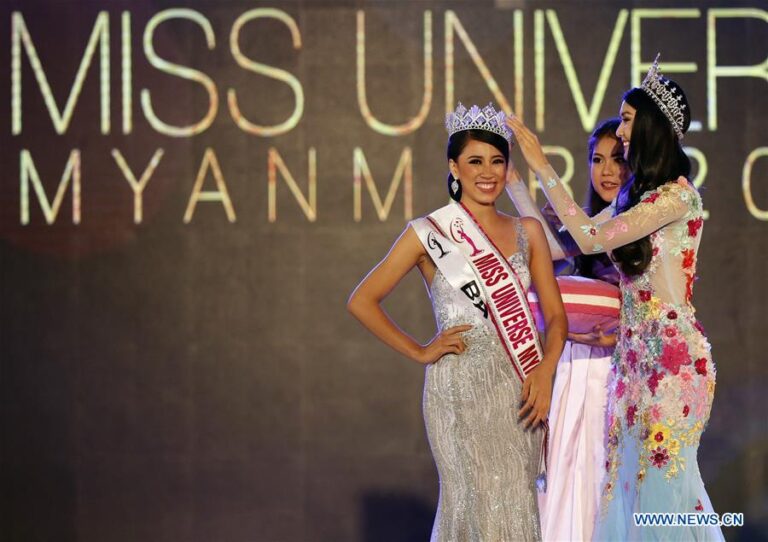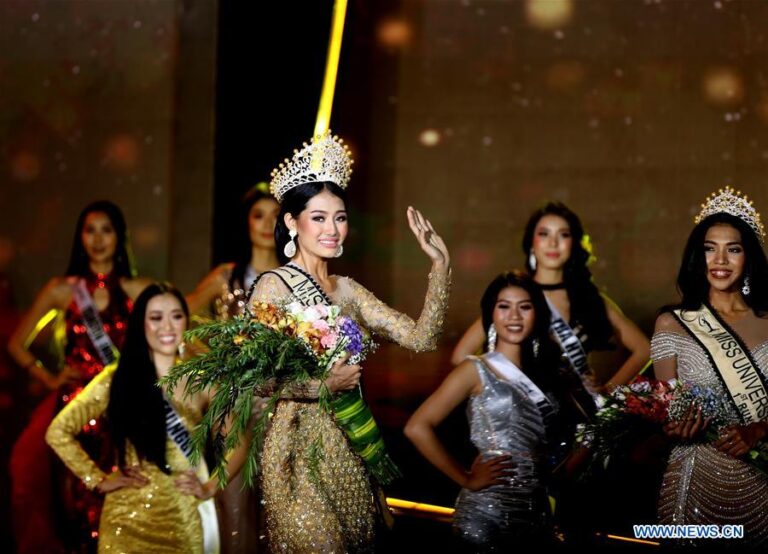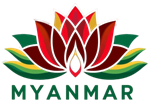
Miss Universe Myanmar — History, Winners & Overview
Introduction
Miss Universe Myanmar is the national beauty pageant that selects Myanmar’s representative to compete at the Miss Universe international competition. Beyond a competition of physical beauty, it has become a cultural stage where debates about modernity, gender roles, national identity, soft power, and Myanmar’s international visibility all converge. The pageant serves as a platform for young Burmese women to engage in public speaking, advocacy, charity work, and international cultural representation.
Since Myanmar’s re-entry into the Miss Universe contest in the 2010s, the national competition has grown into one of the most followed and commercially significant beauty events in the country, watched by pageant fans, media outlets, and the diaspora. Despite periodic disruptions from politics, franchise changes, and criticism, Miss Universe Myanmar remains one of the most visible cultural exports of the country.
History and Origin of Miss Universe Myanmar
Myanmar was absent from the Miss Universe stage during decades of isolation and internal restrictions. The country formally returned to the competition in the 21st century after liberalization in media, travel, and private entertainment industries allowed license-based international franchises to operate again. The modern era of Miss Universe Myanmar is typically traced from the 2010s onward, when private organizers re-established the national selection under an international franchise agreement.
Over the years, the format of the national competition has evolved from modest hotel-based events to televised shows with sponsors, training camps, national costume presentations, public Q&A sessions, and digital engagement. Winners are then trained in runway, speech, styling, and advocacy campaigns before flying to the global stage.
Notable Controversies (Neutral / Factual)
Like most international pageants, Miss Universe Myanmar has faced controversies shaped by politics, cultural norms, and organizational disputes. While details vary by year, several recurring themes have characterized controversies:
Franchise transfer disputes — At times, disagreement between previous and new license holders has led to interruptions in organization or public criticism over management.
Resignations and replacements — There have been instances in which titleholders resigned, were replaced, or faced eligibility questions due to contractual or personal reasons.
Political sensitivity — Because Myanmar’s politics is globally watched, statements by titleholders on civil conflict, military events, or humanitarian crises have sparked intense public reaction.
Cultural criticism — Conservative commentators and religious voices have periodically opposed pageants on moral or cultural grounds, questioning their alignment with traditional Burmese values.
Accusations of bias or favoritism — As with many judged events, transparency concerns and judging fairness have been questioned by segments of the public or fan groups.
Despite these episodes, the franchise has continued to operate with adjustments, clarifications, and new organizational leadership when necessary.
Organization, Selection and Structure
Miss Universe Myanmar is operated under a legally held annual franchise agreement with the Miss Universe Organization. The typical competition cycle includes:
Regional or open casting
Preliminary screening / interviews
Training in grooming, stage presence, speech and etiquette
Preliminary swimsuit and evening gown rounds
Advocacy or platform presentation
Final stage Q&A and coronation
Contestants are evaluated on communication skills, stage confidence, personality, international readiness, and alignment with the values and branding of Miss Universe.
Winners sign a contract with the national organization and represent Myanmar in global competition, sponsored travel, charity events, interviews and promotional appearances.
Winners of Miss Universe Myanmar (with placeholders)
Below is the structured list of national titleholders with placeholders for winners’ names. The table preserves chronology and allows insertion of verified names later.
Miss Universe Myanmar — Winners by Coronation Year
| Year | Winner | Notes |
|---|---|---|
| 2013 | Moe Set Wine | |
| 2014 | Sharr Htut Eaindra | |
| 2015 | May Barani Thaw | — |
| 2016 | Htet Htet Htun | |
| 2017 | Zun Than Sin | |
| 2018 | Hnin Thway Yu Aung | |
| 2019 | Swe Zin Htet | |
| 2020 | Thuzar Wint Lwin | |
| 2021 | — | No competition (COVID-19 pandemic) |
| 2022 | Zar Li Moe | |
| 2023 | Amara Bo | |
| 2024 | Thet San Andersen | |
| 2025 | Myat Yadanar Soe | Most recent crowned winner |

Performance on the Global Miss Universe Stage
Myanmar’s return to the Miss Universe stage marked more than a symbolic re-entry into a global event — it provided the country with visibility before millions of international viewers, judges, sponsors, and media outlets. While Myanmar has not yet won the global crown, its representatives have achieved moments of recognition through national costume showcases, charity profiles, and public speaking segments.
In some years, Myanmar’s delegates gained attention not by placement alone but by viral costume presentations, advocacy statements, or interviews that highlighted the country’s identity and circumstances. Participation itself has contributed to soft diplomacy: pageant audiences abroad often experience their first introduction to Myanmar through national costume, personal speeches, or national feature reels of the contestant.
Myanmar’s level of performance has varied depending on training quality, sponsorship support, access to coaches, and the international environment. Despite constraints, the country has consistently used the platform to assert its cultural presence on the international stage.
Cultural and Social Significance in Myanmar
Miss Universe Myanmar sits at the intersection of culture, modernity, and social aspiration. The competition functions as:
A platform of aspiration for young women
It provides visibility, scholarships, travel exposure, media training and access to public roles otherwise unavailable to many.A mirror of changing norms
The tolerance and popularity of pageants reflect a shift in Myanmar’s urban social attitudes toward global entertainment and public female leadership.A soft representation of national identity
Through costume and speech, contestants present narratives about Myanmar’s heritage, diversity, and challenges to global audiences.A destination for public debate
The pageant attracts discourse over women’s roles, morality, media influence, and the commercialization of national culture.
In the Burmese diaspora, Miss Universe Myanmar is also a symbolic bridge — it allows expatriate communities to maintain a touchpoint with evolving cultural expressions from home, regardless of physical distance or political separation.
The Future of Miss Universe Myanmar
The future trajectory of Miss Universe Myanmar is shaped by several structural variables:
Political uncertainty and permissions
National-level instability can affect event organization, visas, sponsorships, and representation strategy.Franchise continuity
Renewal or transfer of the Miss Universe license determines whether the national contest can legally continue and under what rules.Commercial sponsorship climate
Pageants rely on brand partners for production, training and international logistics — economic slowdowns or risk-averse advertisers may reduce support.Cultural tolerance
Public acceptance can rise or fall depending on generational attitudes, religious conservatism, and exposure to global media.Digital transformation
As fandom moves online, future competitions may rely more on streaming, influencer voting, digital pageant camps, and international co-production.
Even with these uncertainties, the pageant has demonstrated resilience. Past interruptions have not eliminated public interest or organizational attempts to relaunch under new conditions. As long as Myanmar maintains cultural engagement with the global stage, Miss Universe Myanmar remains structurally relevant.
Conclusion
Miss Universe Myanmar is more than a beauty title — it is a cultural institution that documents Myanmar’s intersection with globalization, media, and female public identity. Revived in the 21st century after decades of absence, it has created new pathways for representation, self-expression and international engagement.
Through cycles of franchise changes, controversies, and external crises, the pageant continues to operate as an evolving public arena rather than a static entertainment product. Its winners become unofficial cultural envoys — transported from a national stage to an international one — briefly carrying Myanmar’s image into the global spotlight.
Whether its future is dominated by commercial revival, digital reformatting, or institutional restructuring, Miss Universe Myanmar remains a durable mirror of Myanmar’s social transitions, reflecting both the country’s aspirations and its frictions as it negotiates place, identity and voice in the 21st-century world.
Related posts:
No related posts.
